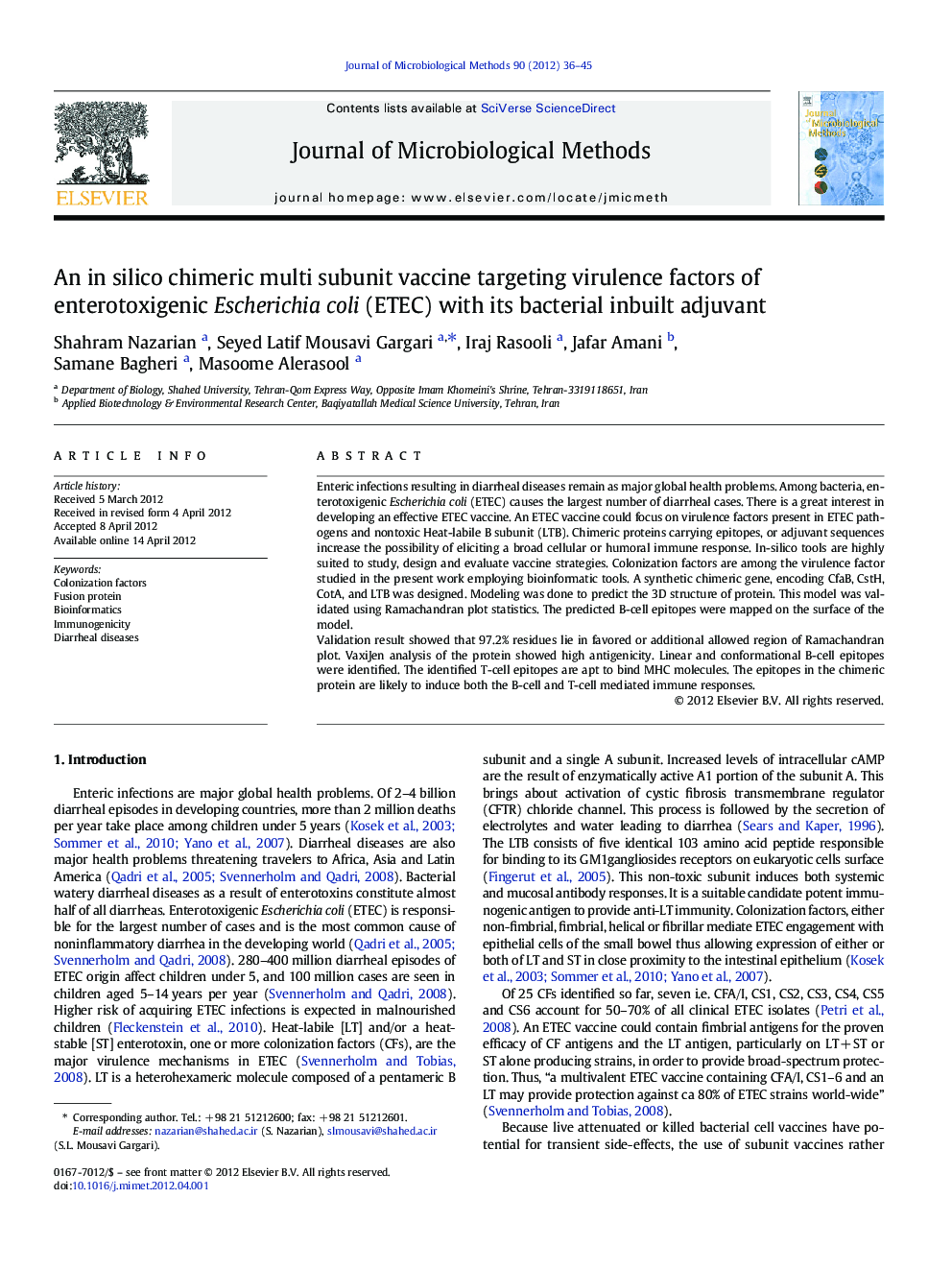| Article ID | Journal | Published Year | Pages | File Type |
|---|---|---|---|---|
| 2090249 | Journal of Microbiological Methods | 2012 | 10 Pages |
Enteric infections resulting in diarrheal diseases remain as major global health problems. Among bacteria, enterotoxigenic Escherichia coli (ETEC) causes the largest number of diarrheal cases. There is a great interest in developing an effective ETEC vaccine. An ETEC vaccine could focus on virulence factors present in ETEC pathogens and nontoxic Heat-labile B subunit (LTB). Chimeric proteins carrying epitopes, or adjuvant sequences increase the possibility of eliciting a broad cellular or humoral immune response. In-silico tools are highly suited to study, design and evaluate vaccine strategies. Colonization factors are among the virulence factor studied in the present work employing bioinformatic tools. A synthetic chimeric gene, encoding CfaB, CstH, CotA, and LTB was designed. Modeling was done to predict the 3D structure of protein. This model was validated using Ramachandran plot statistics. The predicted B-cell epitopes were mapped on the surface of the model.Validation result showed that 97.2% residues lie in favored or additional allowed region of Ramachandran plot. VaxiJen analysis of the protein showed high antigenicity. Linear and conformational B-cell epitopes were identified. The identified T-cell epitopes are apt to bind MHC molecules. The epitopes in the chimeric protein are likely to induce both the B-cell and T-cell mediated immune responses.
► Enterotoxigenic Escherichia coli (ETEC) is responsible for many diarrheal diseases. ► Enterotoxin and colonization are the major virulence factors in ETEC. ► A chimeric multi subunit vaccine was designed against virulence factors of ETEC. ► In silico structure and immunogenicity of the chimeric vaccine was predicted. ► Chimeric protein epitopes could induce B-cell and T-cell mediated immune responses.
